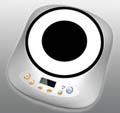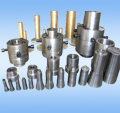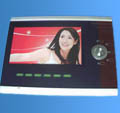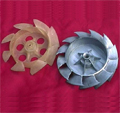

| Address: | PDS Enterprise Inc. 1650 West Artesia Blvd, Suite 278 Gardena, CA90248 |
| Phone: | 1-843-408-0142 |
| Email: | pdsenterprise@gmail.com sales@coolprototyping.com |


Home>Glossary
287. Overview of Rapid Prototyping
The term rapid prototyping (RP) refers to a class of technologies that can automatically construct physical models from Computer-Aided Design (CAD) data. These "three dimensional printers" allow designers to quickly create tangible prototypes of their designs, rather than just two-dimensional pictures. Such models have numerous uses. They make excellent visual aids for communicating ideas with co-workers or customers. In addition, prototypes can be used for design testing.
In addition to prototypes, RP techniques can also be used to make tooling (referred to as rapid tooling) and even production-quality parts (rapid manufacturing). For small Omega Speedmaster Replica production runs and complicated objects, rapid prototyping is often the best manufacturing process available. Of course, "rapid" is a relative term. Most prototypes require from three to seventy-two hours to build, depending on the size and complexity of the object. This may seem slow, but it is much faster than the weeks or months required to make a prototype by traditional means such as machining. These dramatic time savings allow manufacturers to bring products to market faster and more cheaply. In 1994, Pratt & Whitney achieved "an order of magnitude [cost] reduction [and] time savings of 70 to 90 percent" by incorporating rapid prototyping into their investment casting process.
At least six different rapid prototyping techniques are commercially available, each with unique strengths. Because RP technologies are being increasingly used in non-prototyping applications, the techniques are often collectively referred to as solid free-form fabrication, computer automated manufacturing, or layered manufacturing. The latter term is particularly descriptive of the manufacturing process used by all commercial techniques. A software package "slices" the CAD model into a number of thin (0. 1mm) layers, which are then built up one atop another. Rapid prototyping is an "additive" Cartier Replica Watches process, combining layers of paper, wax, or plastic to create a solid object. In contrast, most machining processes (milling, drilling, grinding, etc. ) are "subtractive" processes that remove material from a solid block. RP' s additive nature allows it to create objects with complicated internal features that cannot be manufactured by other means.
Of course, rapid prototyping is not perfect. Part volume is generally limited to 0. 125m3 or less, depending on the RP machine. Metal prototypes are difficult to make, though this should change in the near future. For metal parts, large production runs, or simple objects, conventional manufacturing techniques are usually more economical. These limitations aside, rapid prototyping is a remarkable technology that is revolutionizing the manufacturing process.
 We are constantly looking for new products in order to grow our business and Invention Home has enabled us to streamline that process much more quickly.
We are constantly looking for new products in order to grow our business and Invention Home has enabled us to streamline that process much more quickly. Marsha Dunmyre
CA, U.S.A
Cool Prototyping Copyright 2008-2009 © All Rights Reserved. Rapid Prototyping






